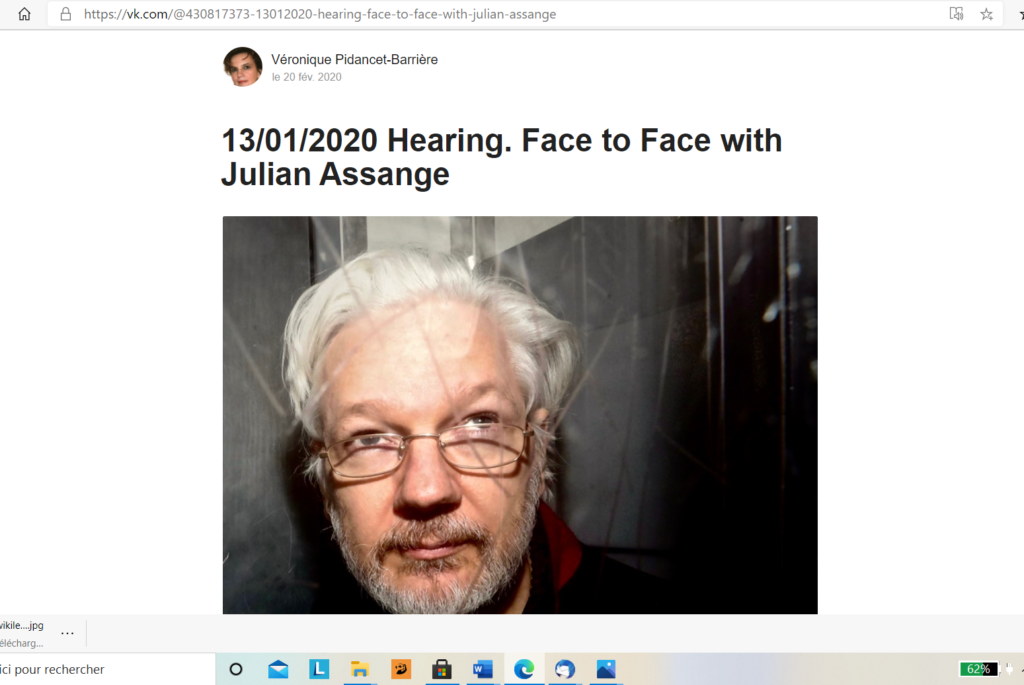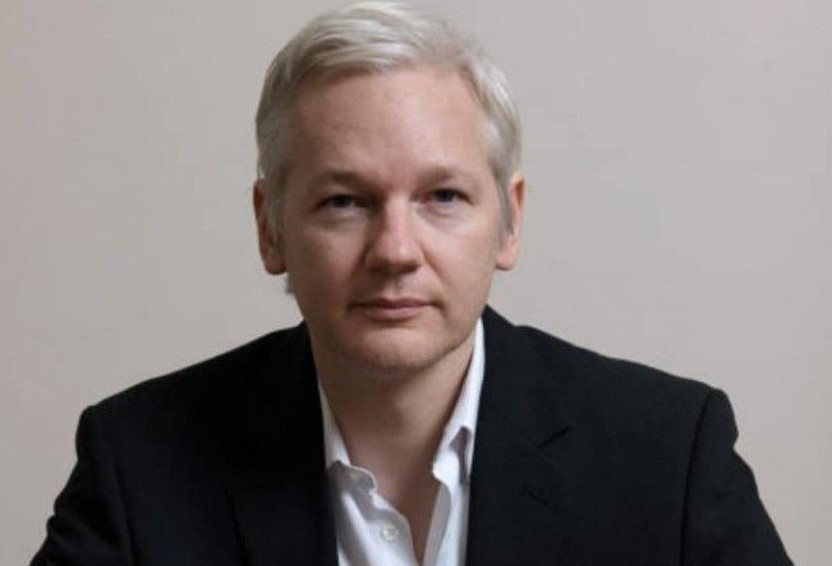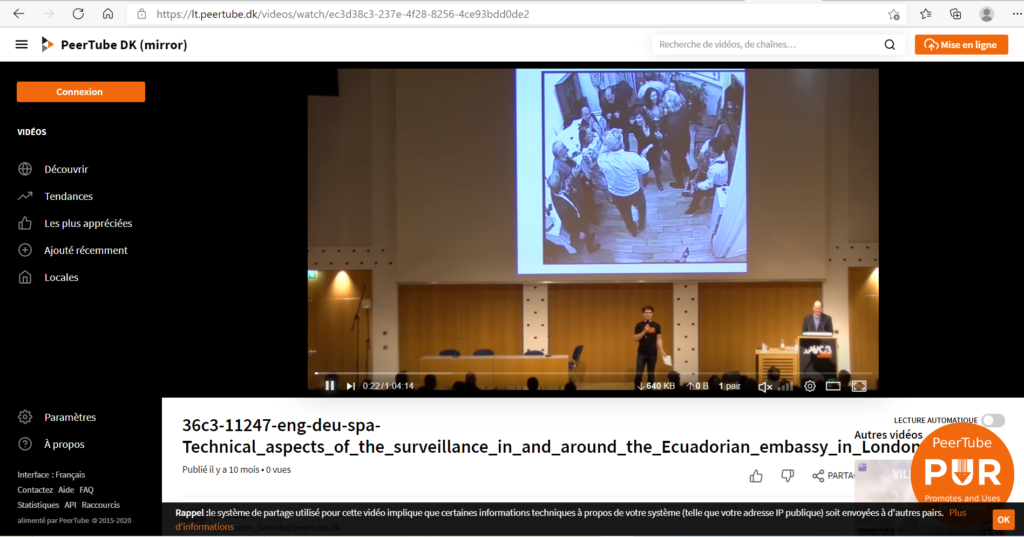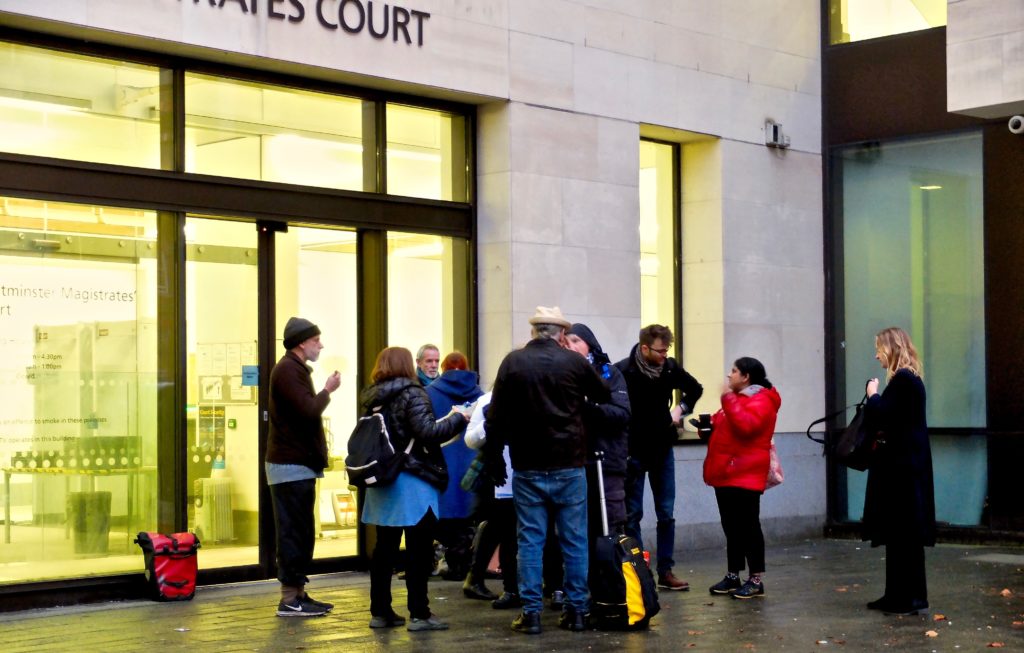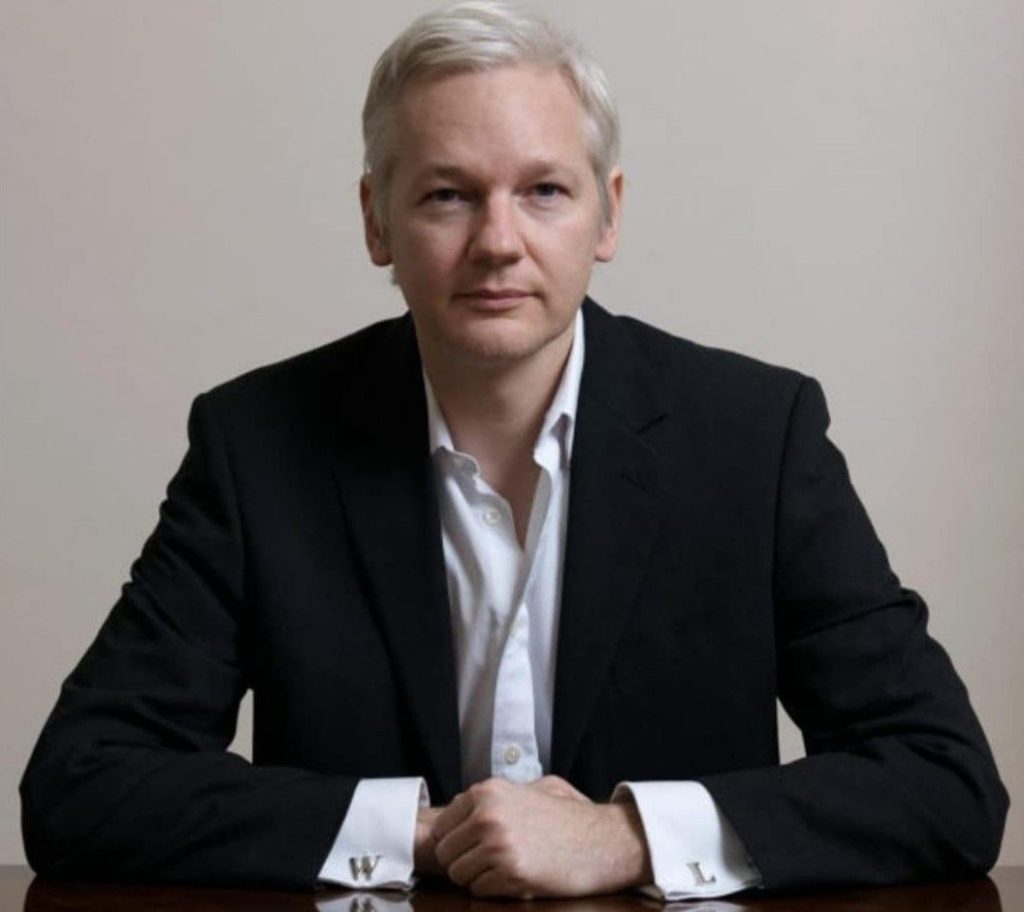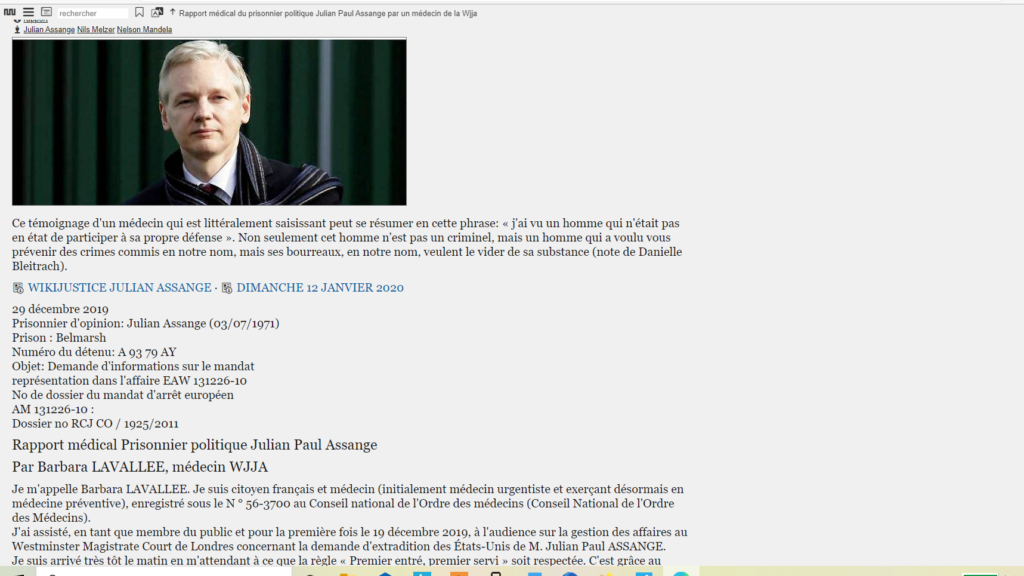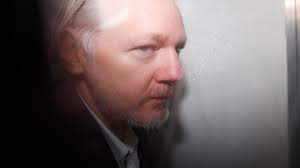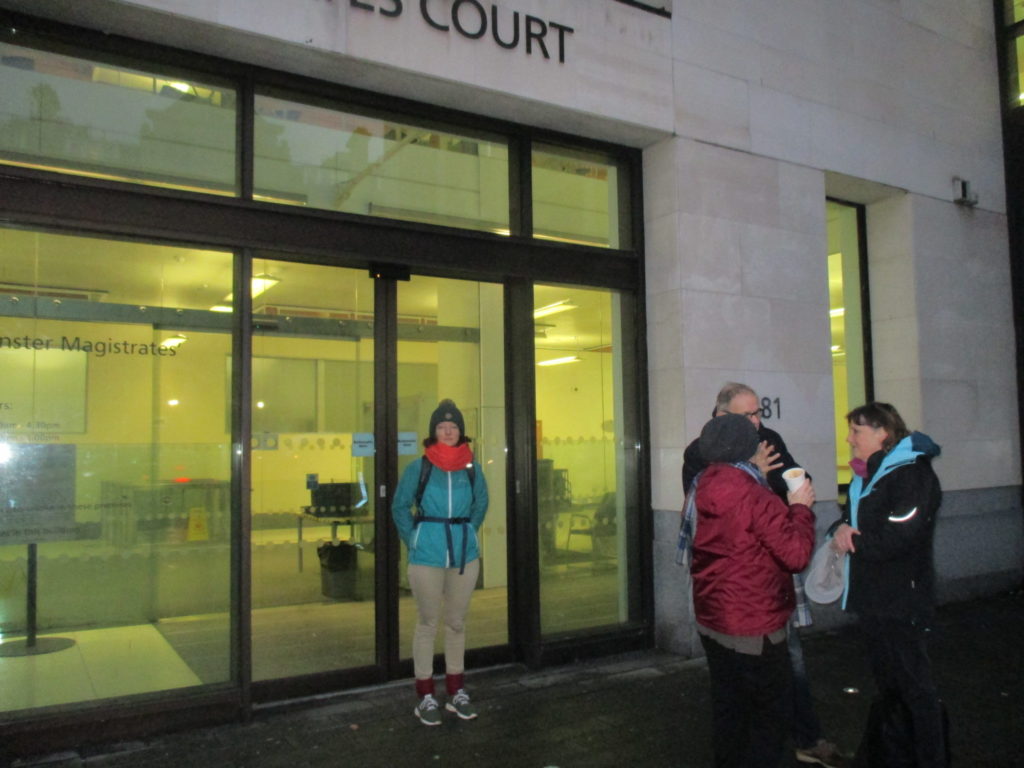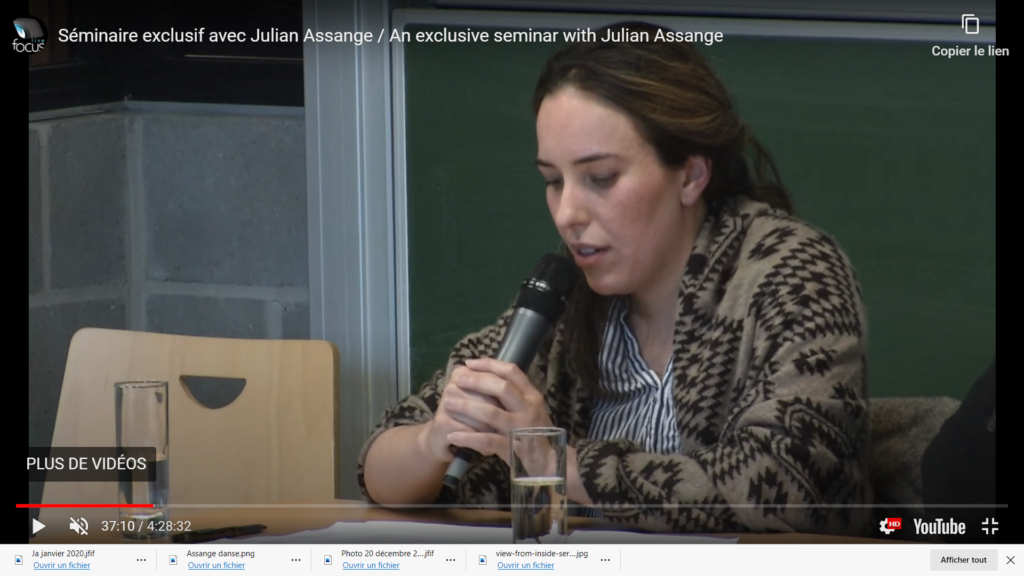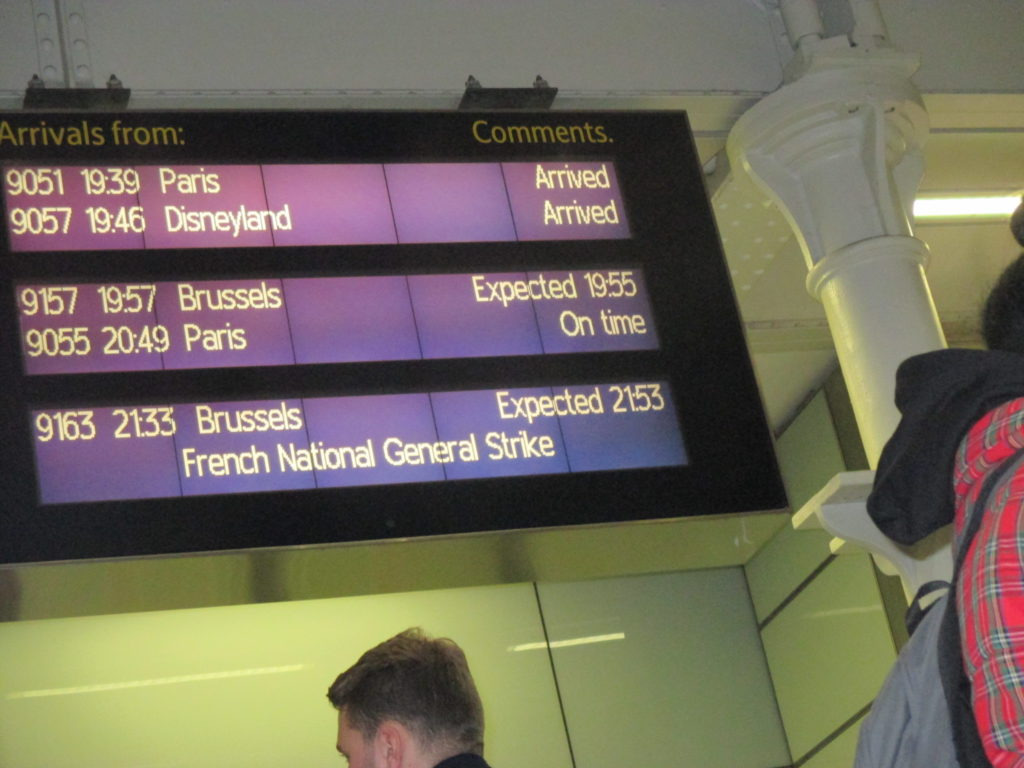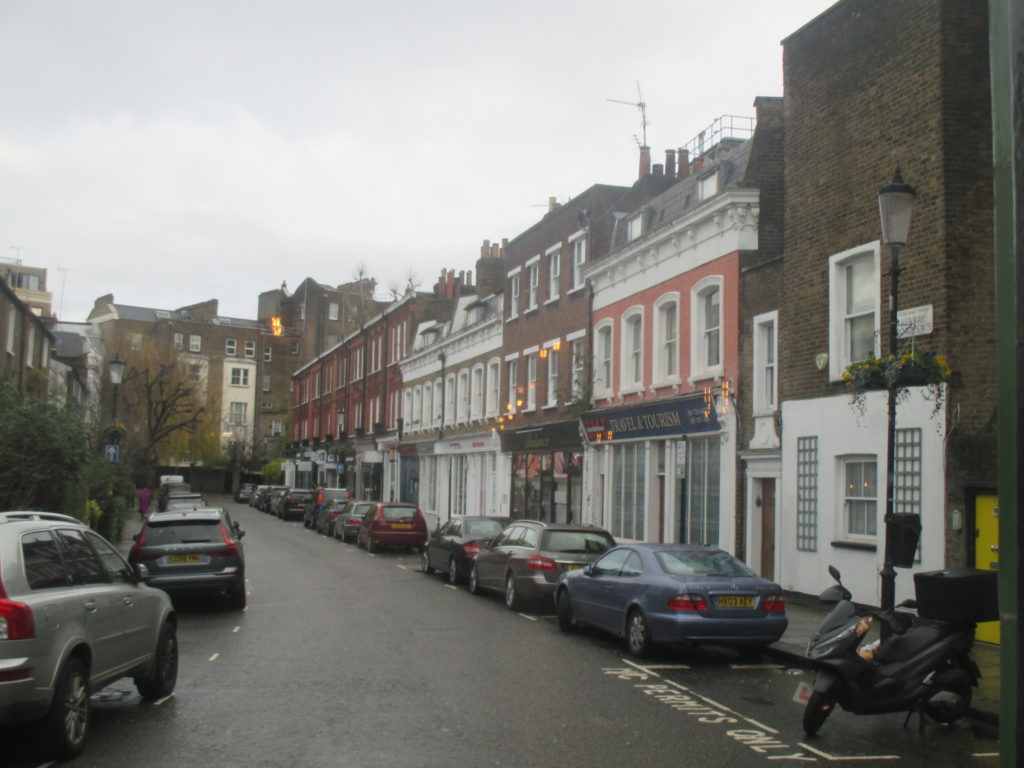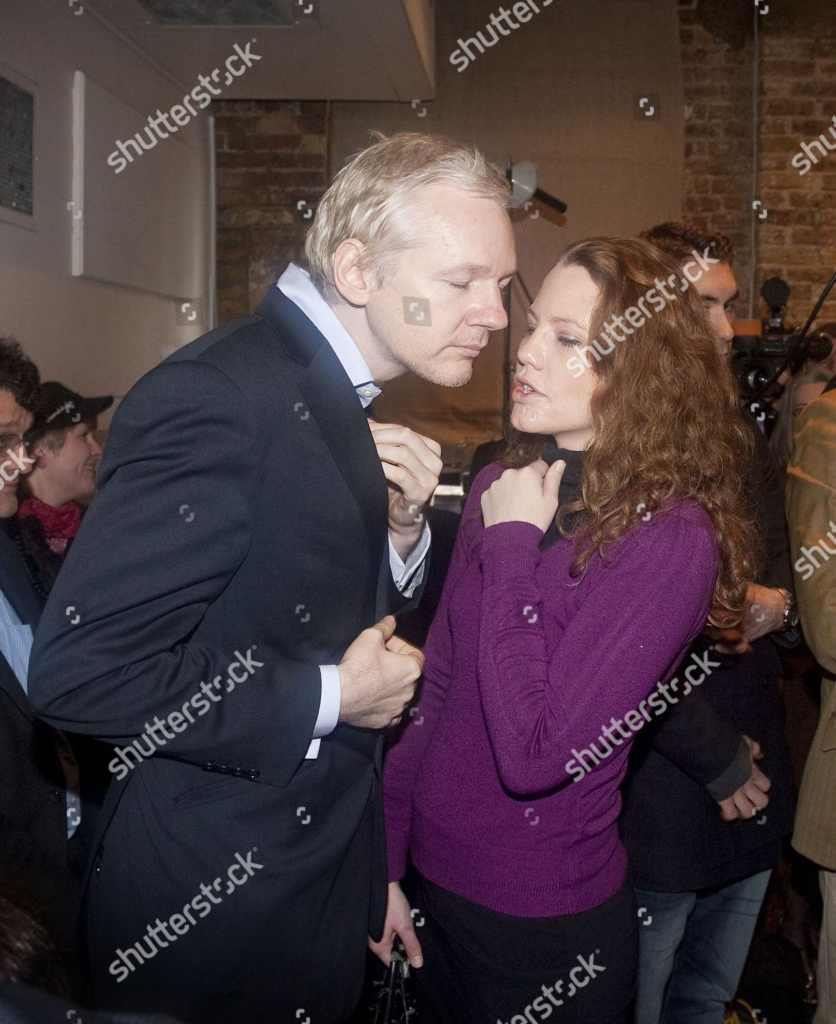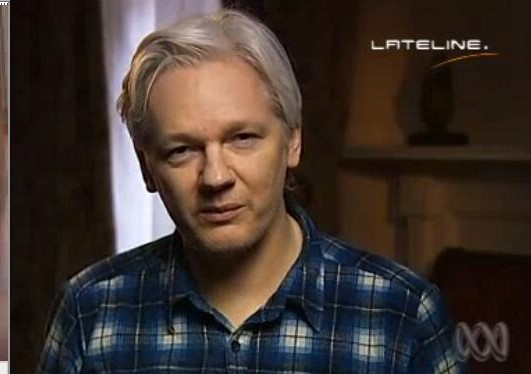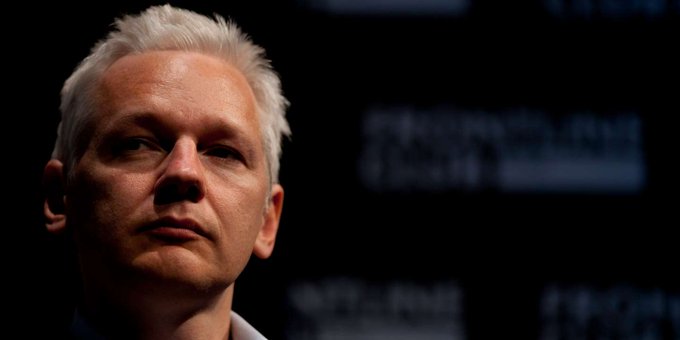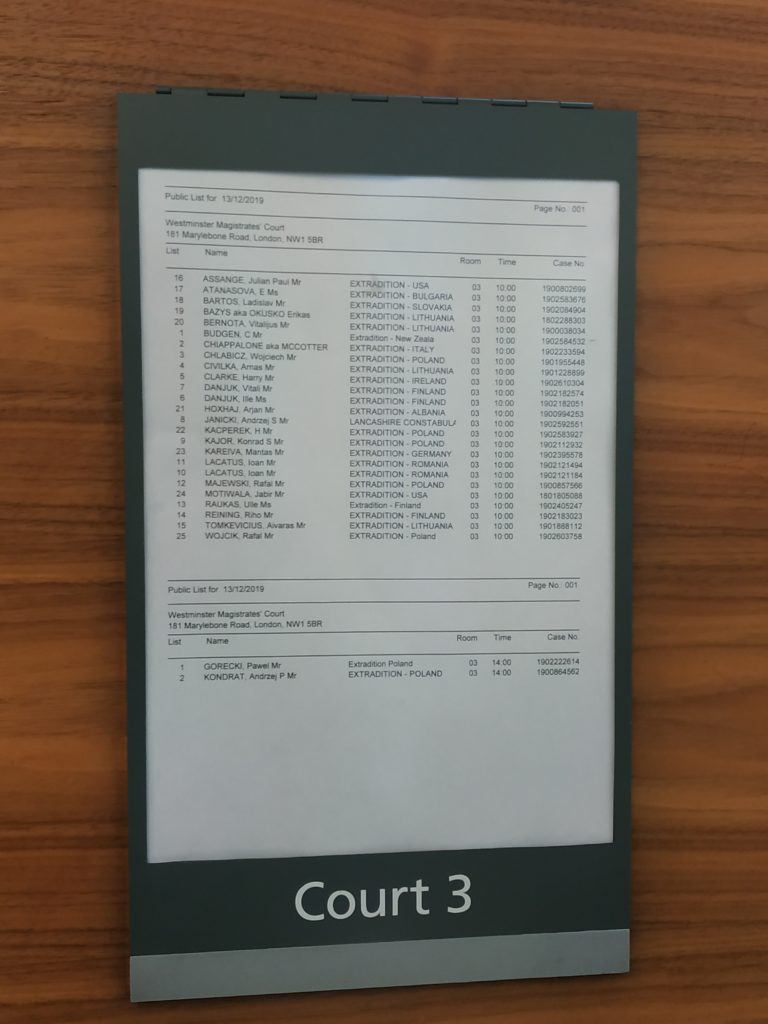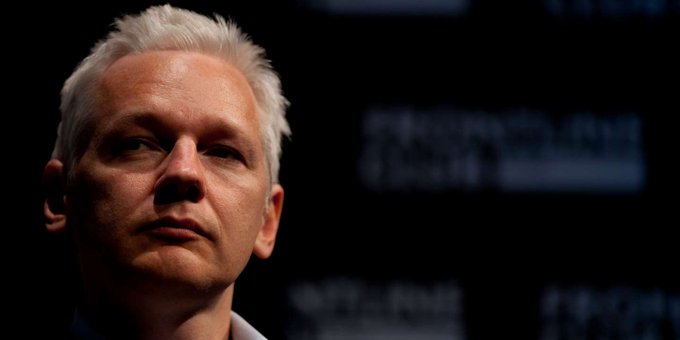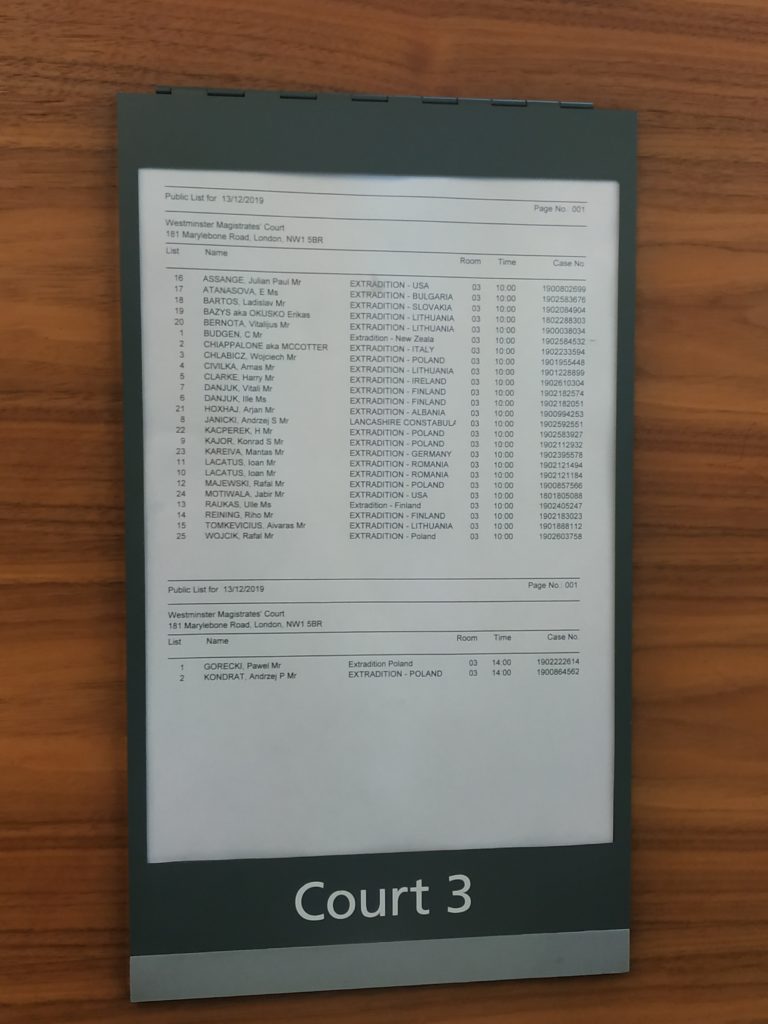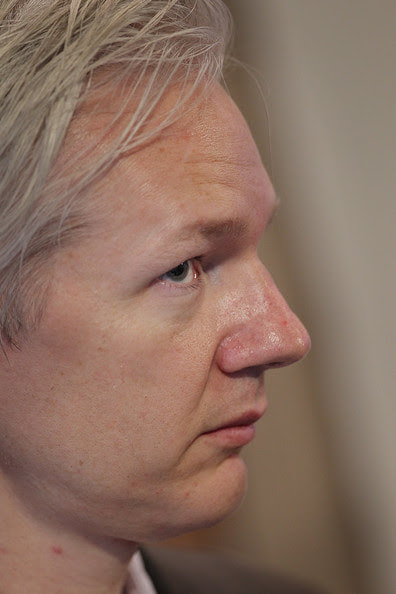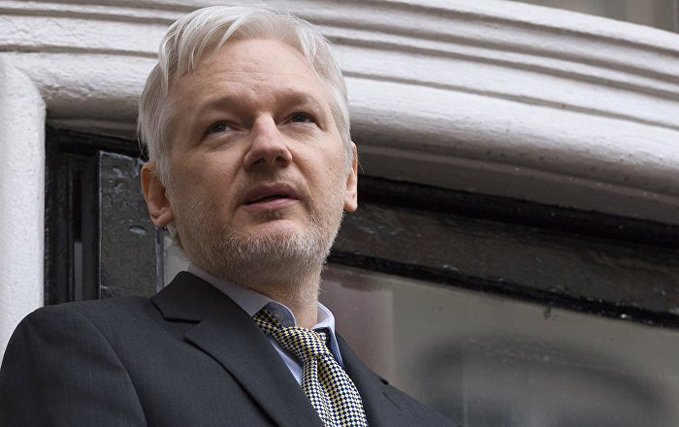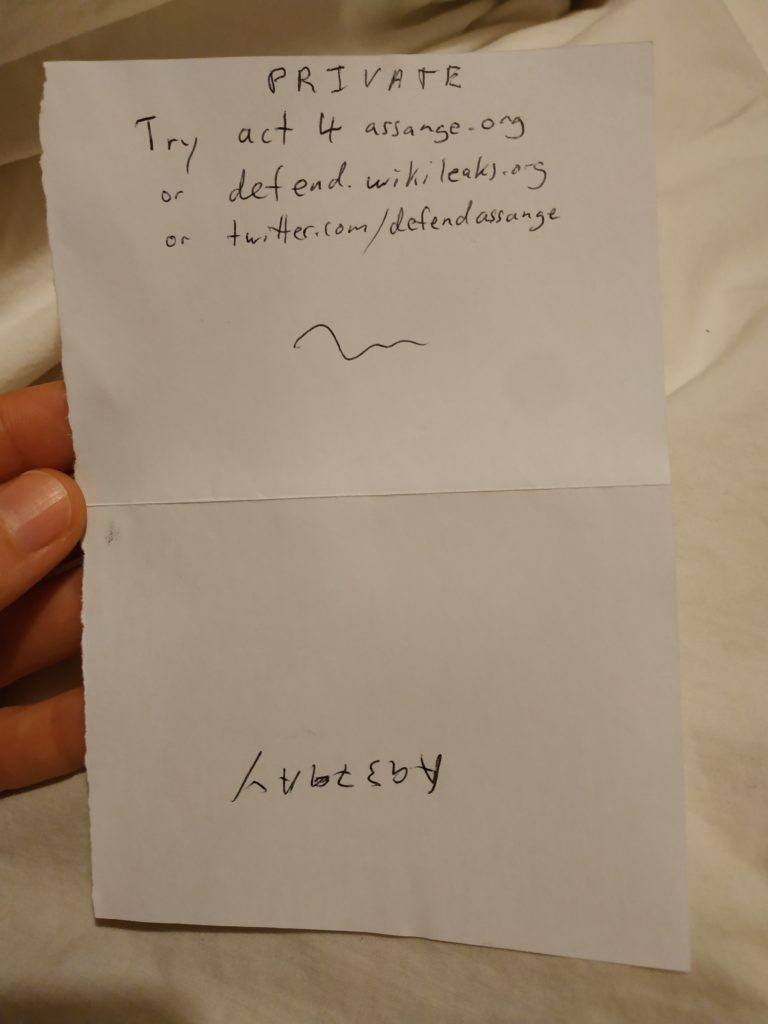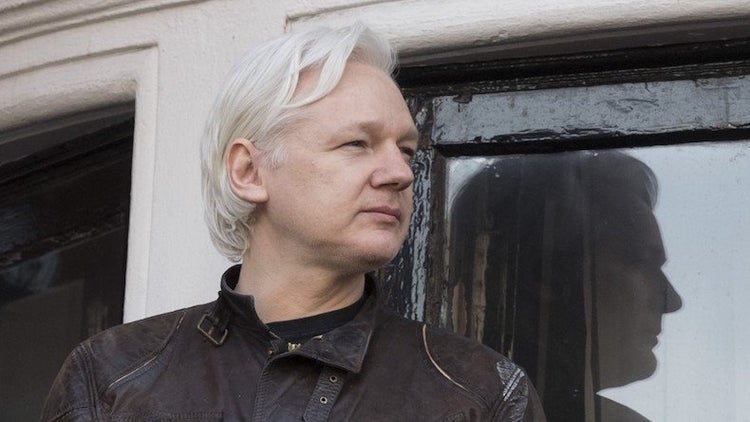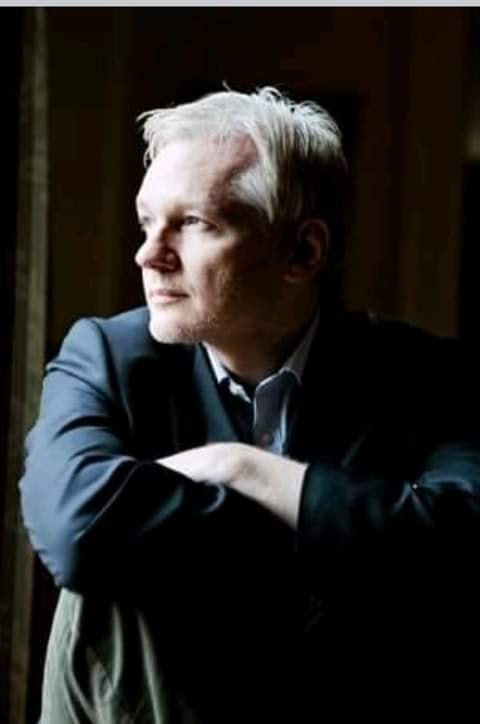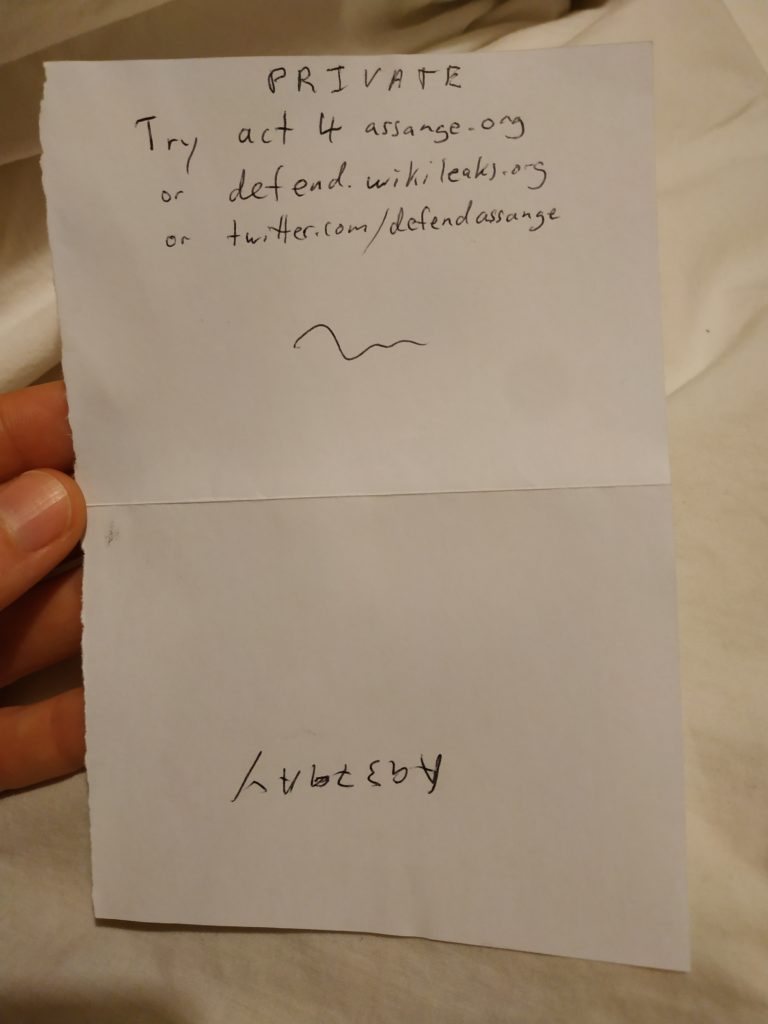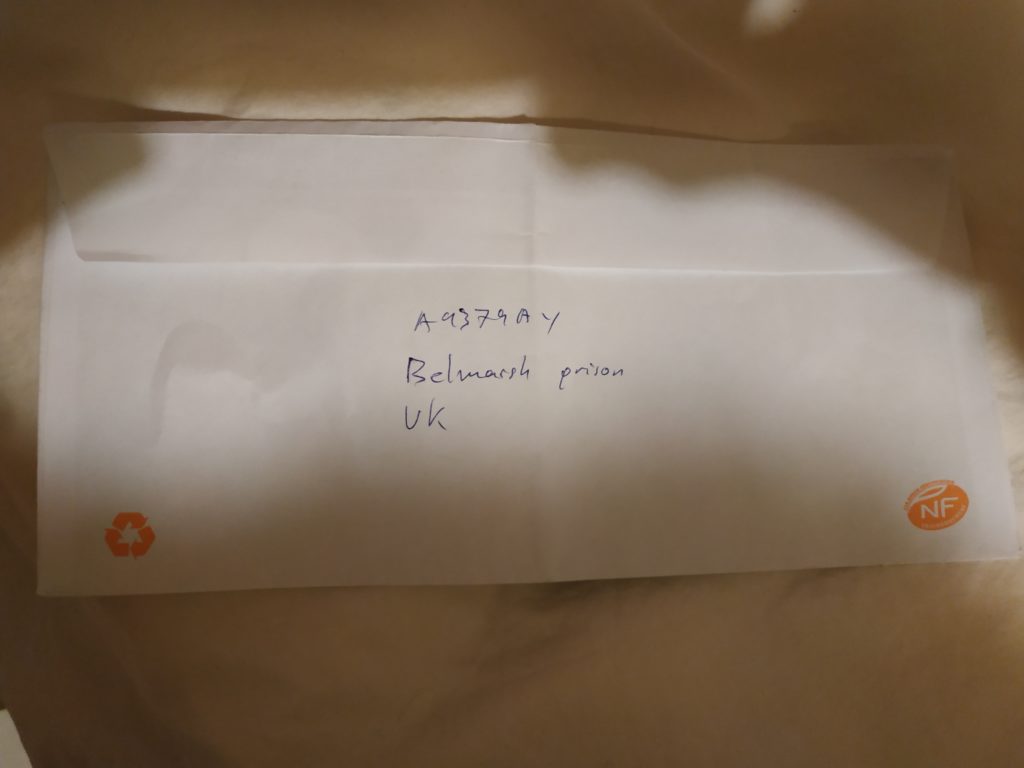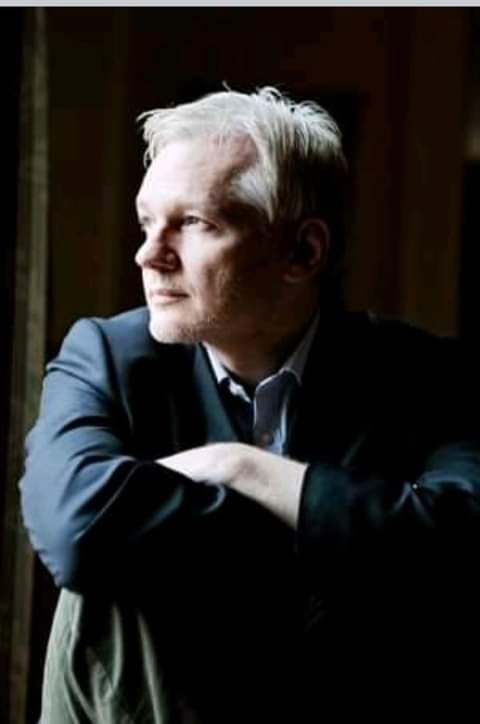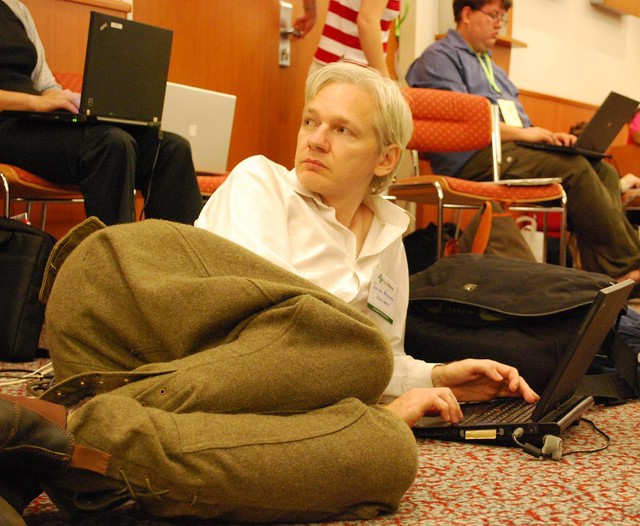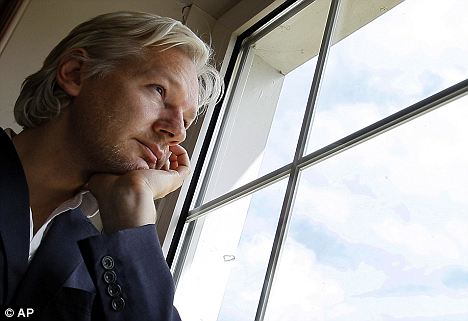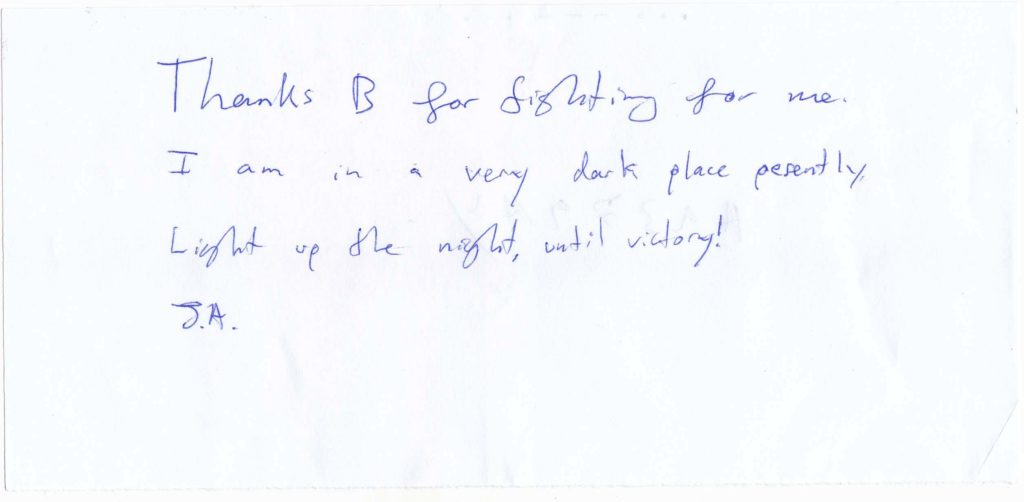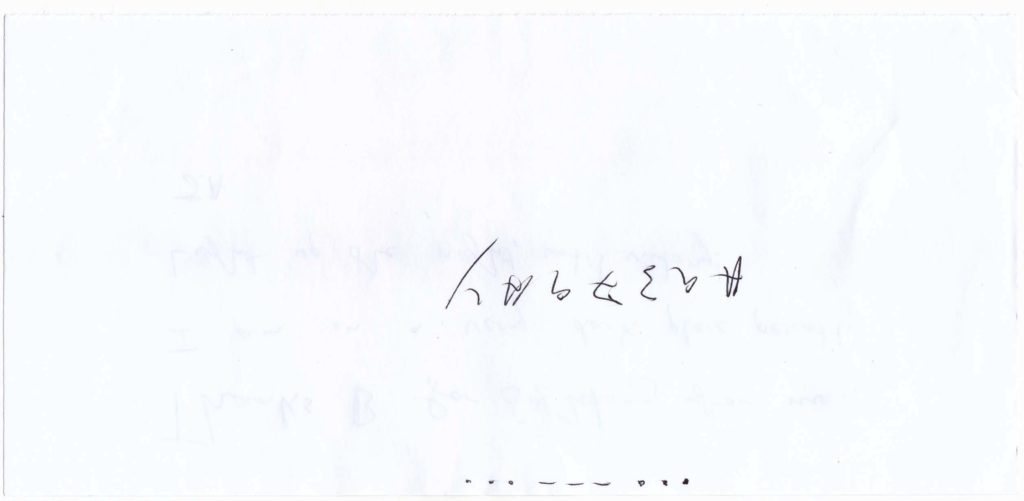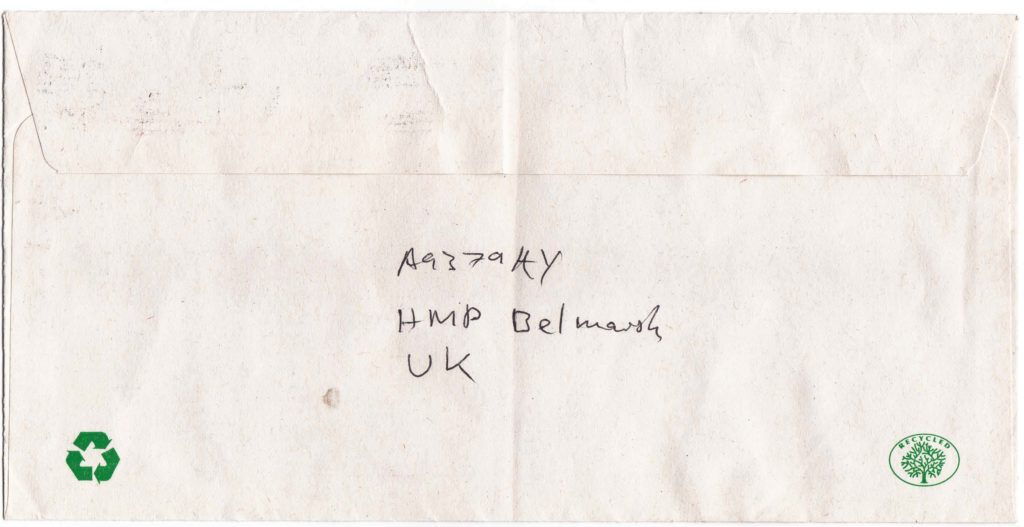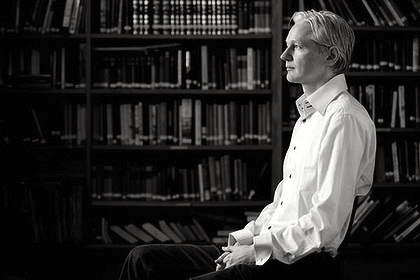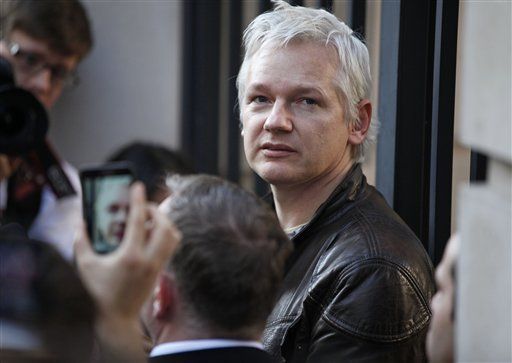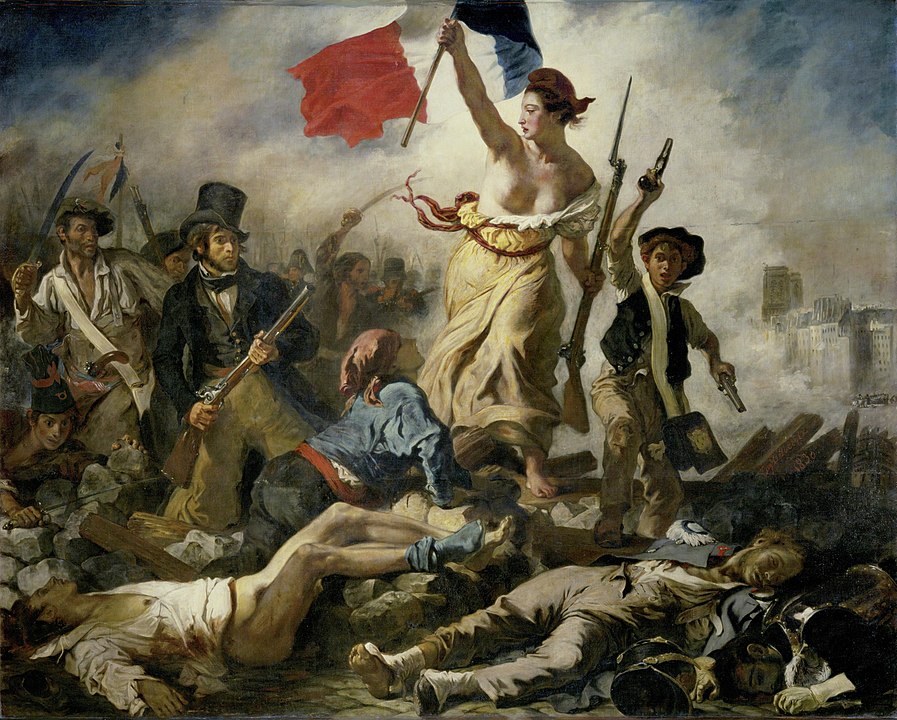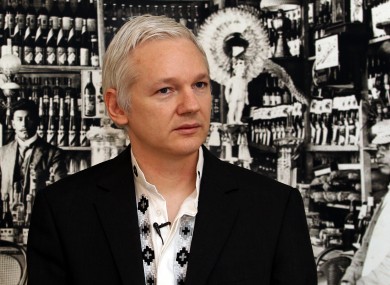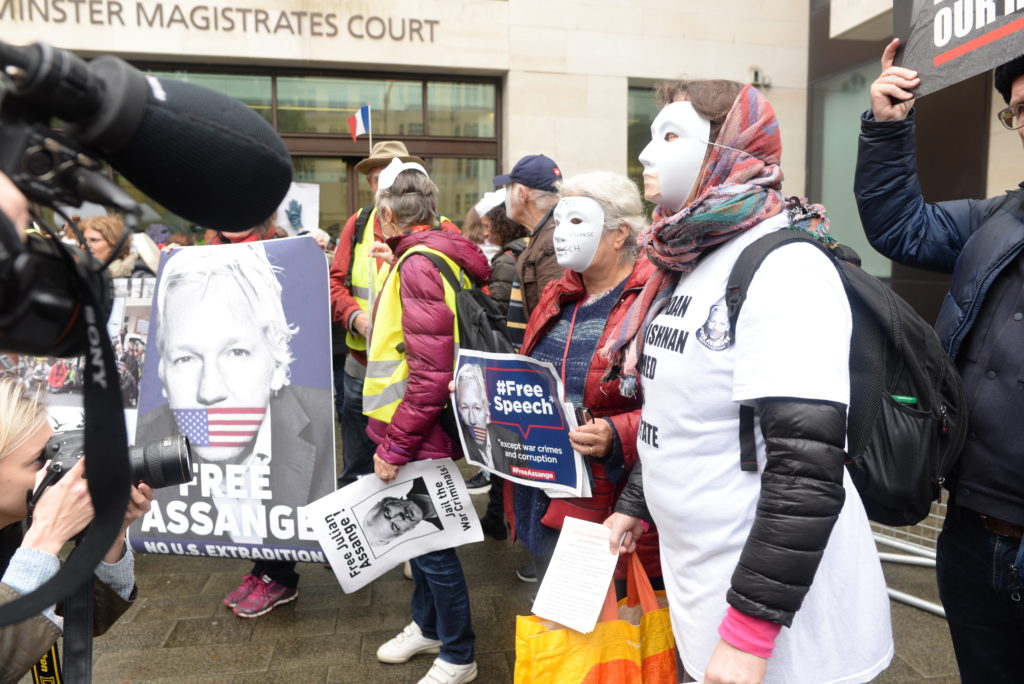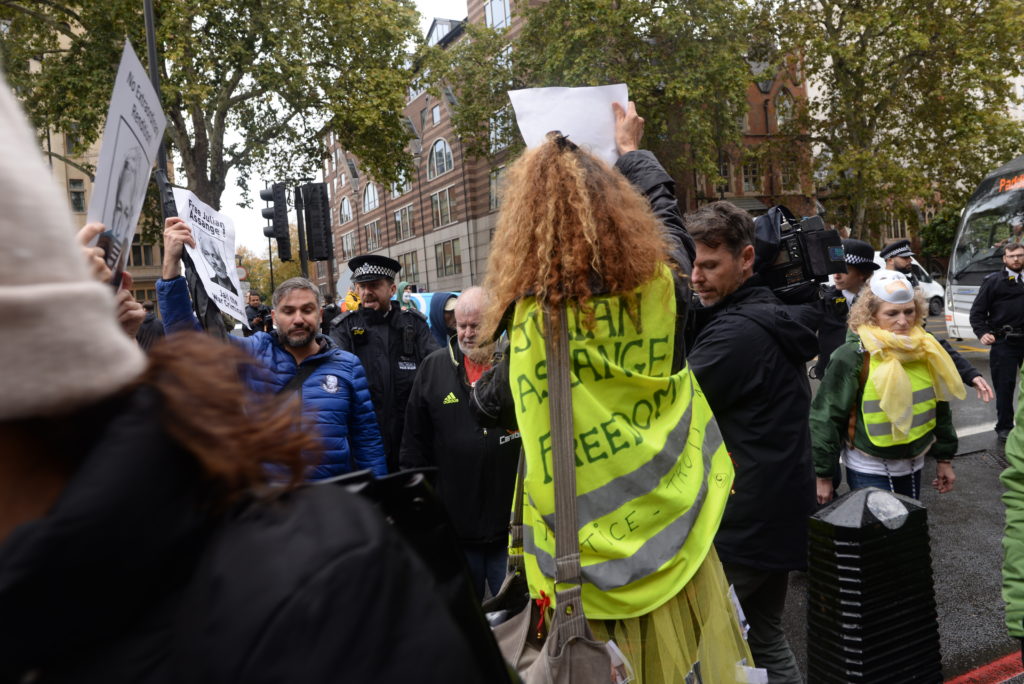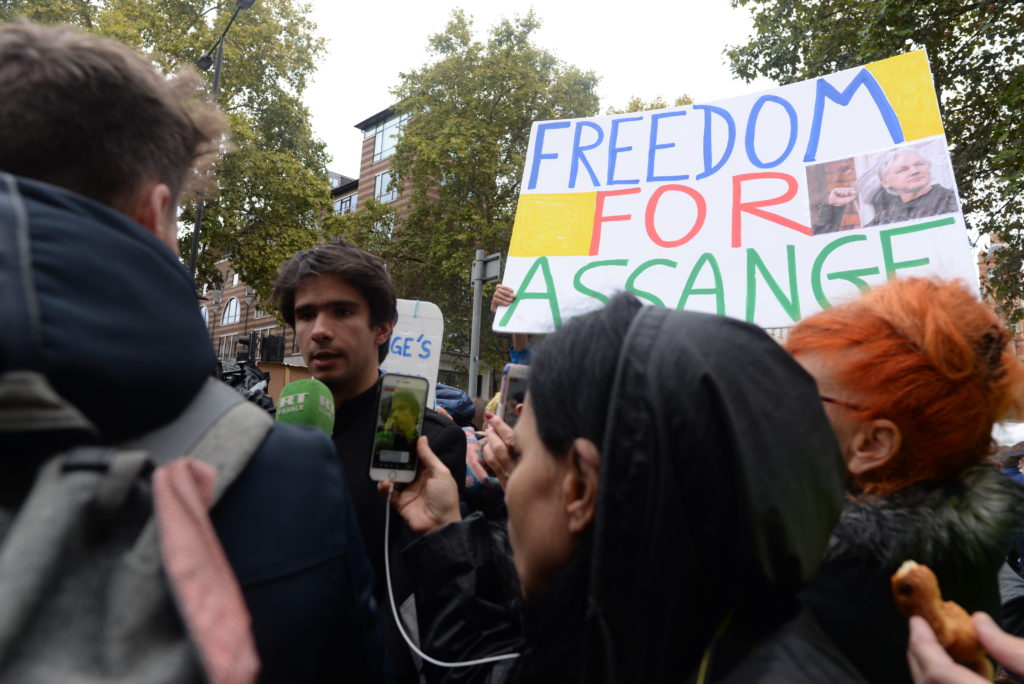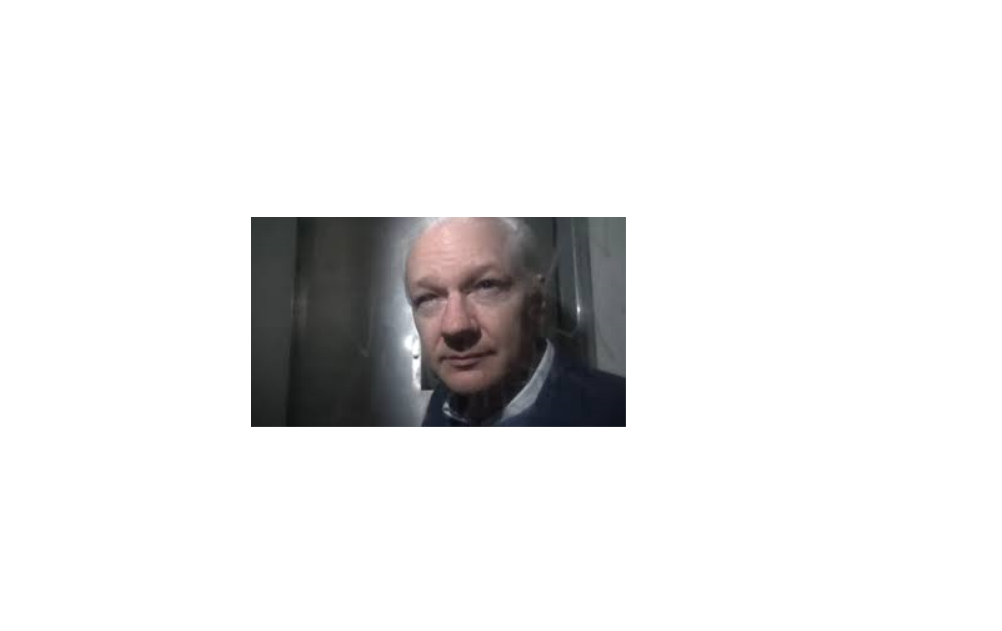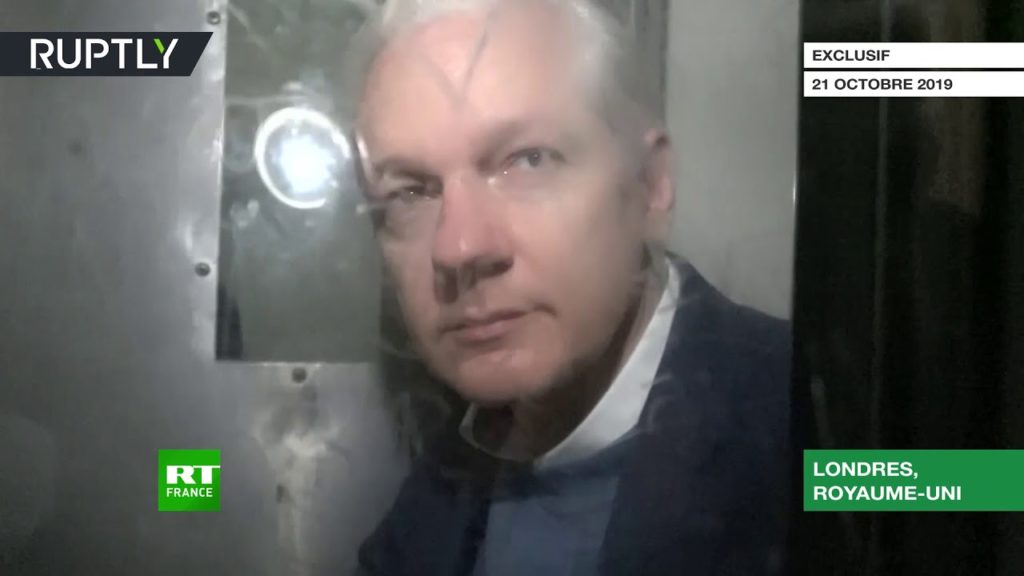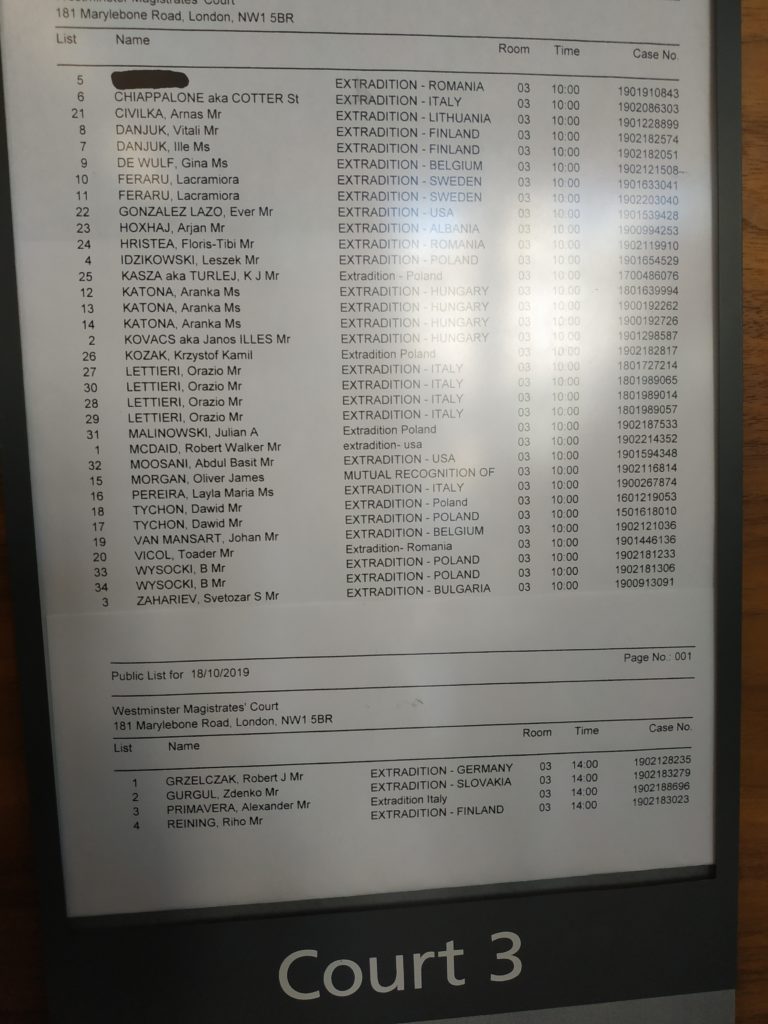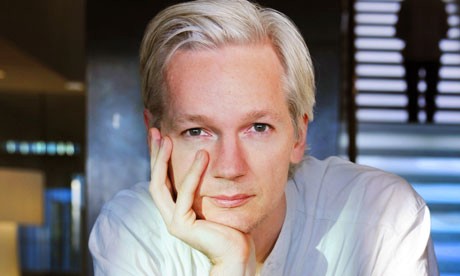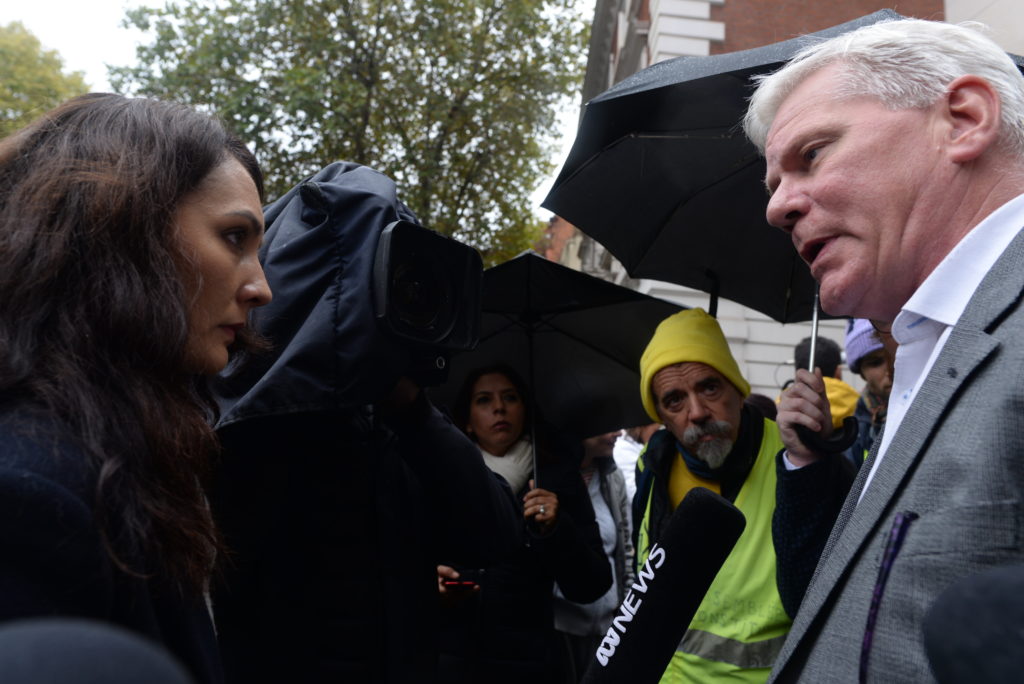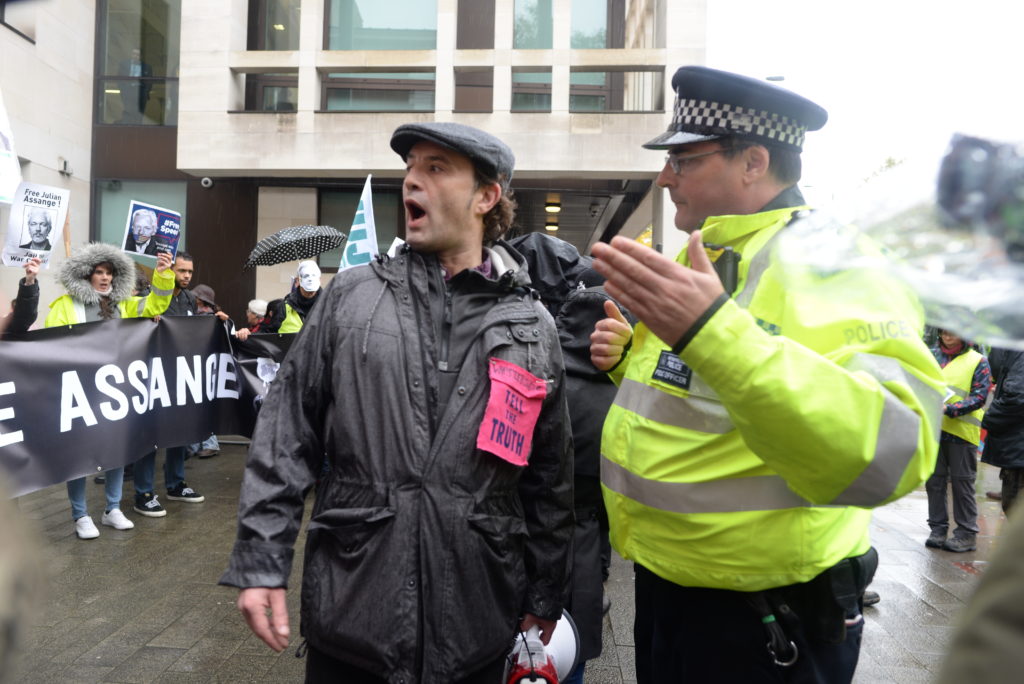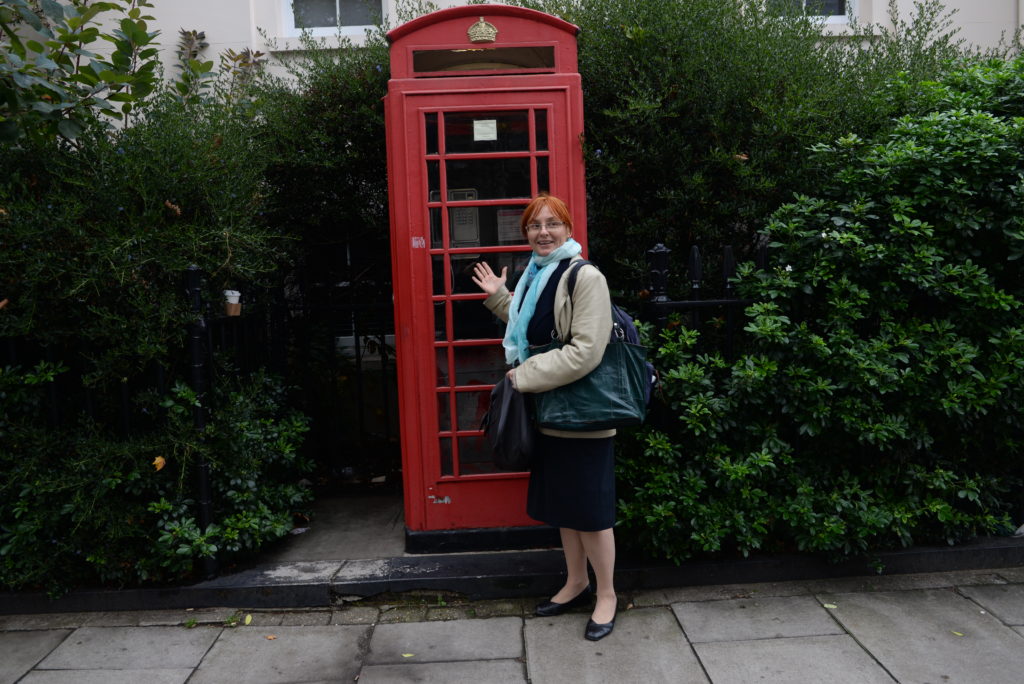Monika Karbowska
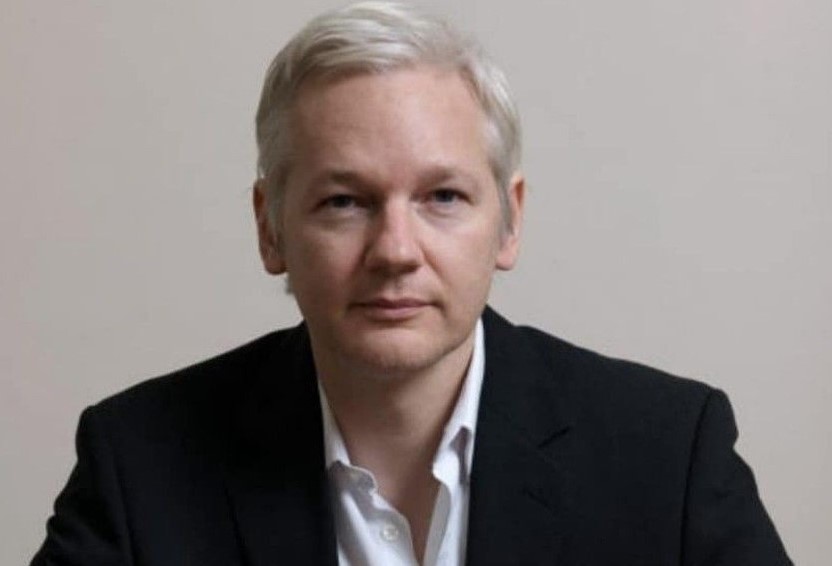
The human rights association Wikijustice Julian Assange filed its third request for the release of Julian Assange in the week of 6 January, as well as the report of the association’s doctor who attended the hearing on 19 December 2019. These documents, submitted to the Court by a British lawyer or human rights association, could have led to the immediate release of Julian Assange the same day, not only because he is a political prisoner, but also, and this is a huge scandal, because he is being tortured in his current place of detention.
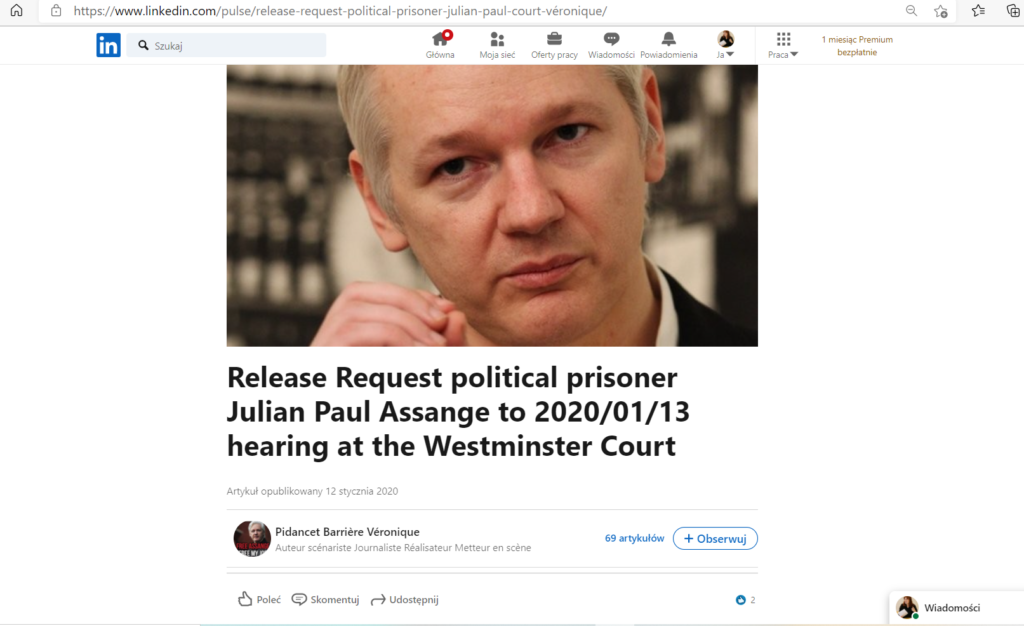
The document also points out the procedural flaws and irregularities committed by the Westminster Magistrate Court during the hearing Case 1902473293 – EIO/026/19 – British Home Office Executor of 20 December 2019[1]. On that day, before and during Julian Assange’s physical appearance, unauthorised persons once again found themselves in a consultation room in the court to discuss the ‘Assange case’. The hearing publicly announced as taking place in room 10 was secretly moved to another room, number 4, with the door closed and no official closed session announced. The door of this courtroom was locked and kept closed by the head of security of the private company Mitie, who attended the proceedings when he is not normally allowed to do so in a closed session. These violations of law are worrying, as no observer knows who the plaintiff is or what the purpose of this procedure is, which was announced by Julian Assange’s lawyers as a complaint made in Spain against the Spanish company UC Global accused of spying on Julian Assange in the state-owned flat of Ecuador 3 Hans Crescent Street in London. The problem is that the European Investigation Order (EAW) can be used to interview victims and witnesses, but also to extradite suspects for questioning to European countries. It is therefore important for Wikijustice to clarify the situation of Julian Assange in this procedure when other individual rights of Julian Assange have again been violated: Andy Müller Maguhn, President of the Wau Holland Foundation, presented at the conference of the Chaos Computer Club in Leipzig on 28 December 2019 the private videos of Julian Assange, logically without his consent since these images belong to the legal procedure of the European Investigation Order 1902473293 – EIO/026/19. Thus, Julian Assange’s right to privacy has apparently been violated by this head of a German institution with which Julian Assange has been working under contract since 2011 as head of the 04 « Wikileaks » project and since 2014 as manager of the Icelandic company Sunshine Press Production. How Andy Müller Maguhn was able to access these images as evidence in criminal proceedings is highly problematic, as is the manner in which he exhibited them urbi et orbi. A key defence lawyer for Julian Assange, master Baltasar Garzon, was also publicly shown by Andy Müller Maguhn in these excerpts from surveillance camera footage.
https://lt.peertube.dk/videos/watch/ec3d38c3-237e-4f28-8256-4ce93bdd0de2
This situation, as well as Julian Assange’s poor health, shocked many activists who exerted salutary political pressure through numerous letters to the Westminster Magistrate Court. On the morning of Friday 10 January, the Court decided to postpone the hearing to extend the pre-trial detention scheduled for 14 January to Monday 13 January and to bring Julian Assange to appear in court in person. This last decision is a victory for which we all fought, all those who care about law, justice and the life of Julian Assange in particular.
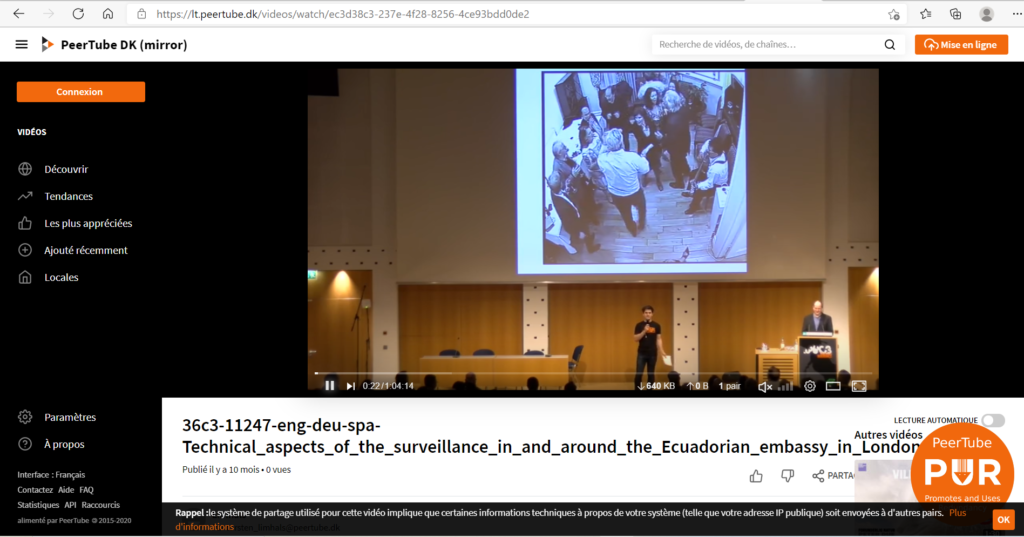
So a team from Wikijustice travelled to London on 13 January to attend the hearing. Getting to the courtroom was a physical and psychological ordeal, as usual, but it can be noted that the court made significant progress in respecting the publicity of the proceedings: it facilitated the accreditation of journalists and scrupulously applied the « first come, first served » rule, i.e. activists present at the court door between 6 and 9 a.m. were able to enter the courtroom in order of arrival. Afterwards, they just had to wait for 3 hours standing in their places without moving until the first two cases were tried.
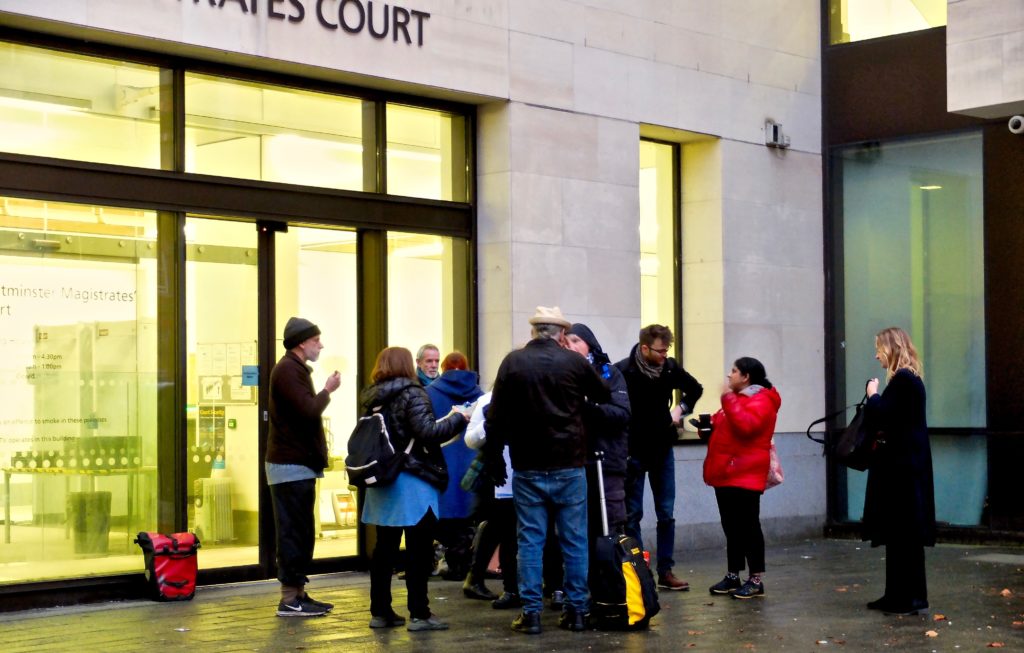
At 11.00 am the court manager announced the start of Julian Assange’s hearing and about 20 journalists sat in the courtroom and 40 people took their seats in the stands of the public box. Meanwhile, some forty demonstrators were standing outside the courthouse door, trying to communicate by all means with Julian Assange when he was brought in by the privately-owned Serco van.
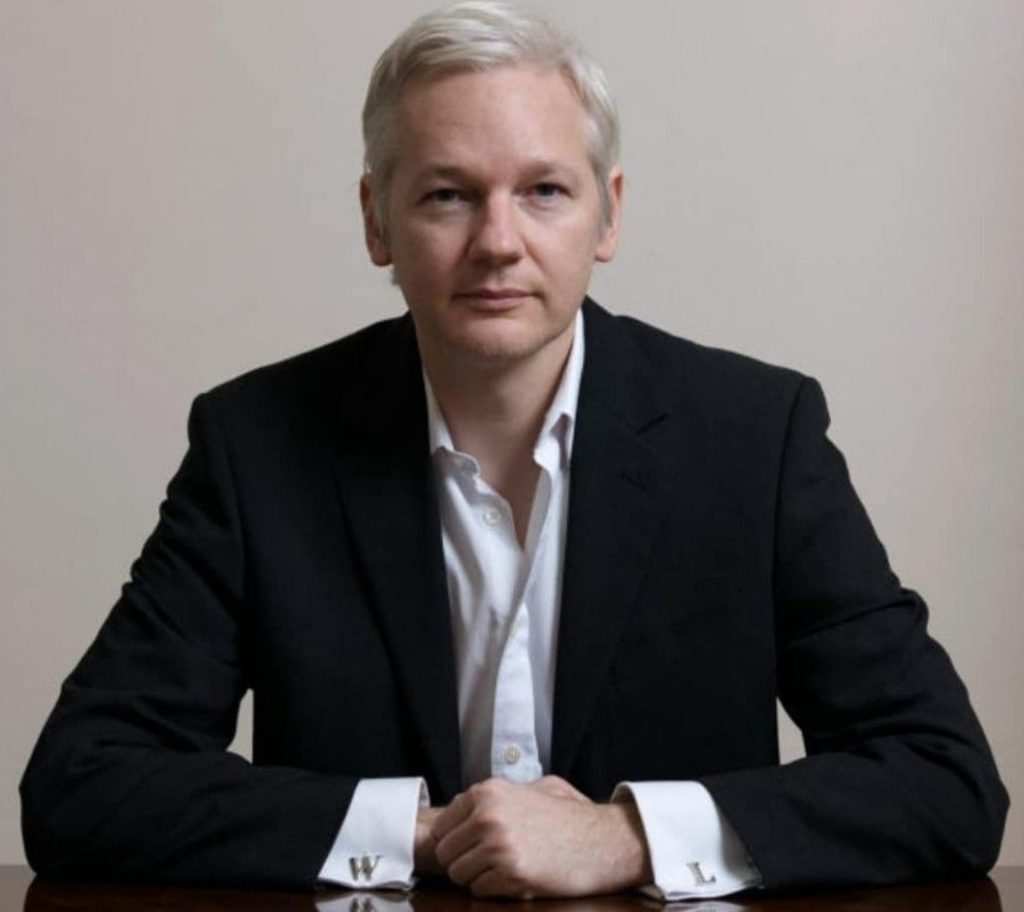
So a team from Wikijustice went to London on 13 January to attend the hearing. Getting to the courtroom was a physical and psychological ordeal, as usual, but it can be noted that the court made significant progress in respecting the publicity of the proceedings: it facilitated the accreditation of journalists and scrupulously applied the « first come, first served » rule, i.e. the activists present at the court door between 6 and 9 am were able to enter the courtroom in order of arrival. Afterwards, they just had to wait for 3 hours standing in their places without moving until the first two cases were tried. At 11.00 am the court manager announced the start of Julian Assange’s hearing and about 20 journalists sat in the courtroom and 40 people took their seats in the stands of the public box. Meanwhile, some forty demonstrators were standing outside the courthouse door, trying to communicate by all means with Julian Assange when he was brought in by the privately-owned Serco van.
When we entered the courtroom we chose central seats hoping to be able to communicate with Julian Assange through the eyes and through the heart since we were forbidden to speak. The relatives of « Greekemmy » thus found themselves sitting together on the right side of the room, the other activists on the left side. Joseph Farell from « Wikileaks » entered the audience as a journalist. John Shipton, Vaughan Smith, Kristinn Hrafnsson, John Pilger and Craig Murray were absent once again. Gareth Peirce was present with the young boy who on December 19th and 20th was travelling with Stella Morris and who introduced himself to us as the articling student of the lawyer. He will be seated in the back row of the room next to another woman and Jennifer Robinson who will be content with this day as an observer. We note as positive the absence of Clair Dobbin and any American « observer ». They do not have to be present in a procedure that only concerns English domestic law. The prosecutor is a different person than usual and will play a marginal role.
A little after 11 o’clock, but before the arrival of Judge Julian Assange entered through the small door of the glass box on our left. It’s always unreal when he finally appears, when almost night and day we make so much effort to free him. The emotion we feel is always something like relief, disbelief, timid hope. But afterwards, the effect of watching the caged man become psychologically disturbing and we focus on what we can do, how to help him. We don’t have the impression that he has been getting better since the 19th of December, the date of the hearing attended by the doctor from Wikijustice and on the basis of which she was able to write the medical report for the association[2]. Julian Assange may not have the stereotypical gestures of suffering that are so visible and so well described in the medical report on 13 January, but he limps when he enters the stall and has to hold on to the doorway so as not to fall out. He sits in the middle of the box and not at the back, which is positive because he is closer to the public. However, while the court grants us these 5 surprise minutes between the moment of his entry and the arrival of the judge, Julian Assange can do nothing else than sit, as if exhausted, and stare at the room in front of him. His gestures remain very slow and when he gets up when the judge arrives, the sleeves of his jacket lift up I can see the black bracelet on his left wrist. It also appears that his overly loose clothing, dark jacket and trousers and grey sweatshirt mask the thinness of his figure. He has his hair done and his beard trimmed, he wears glasses but they don’t always fit and to see he has to look over the frame. The impression that he is not in control of his own body remains. That said, his behaviour will change during the hearing. Prostrate at first, then as if galvanised by the presence of friends, he will try to take part in the debates, to the point of calling Gareth Peirce several times by banging on the glass of the stall, forcing him to stand up and turn towards him to talk to him.
Moreover, the atmosphere in the courtroom has changed. Of course it remains tense, but we feel that the court staff is not hostile to us, as if the activists’ faith in justice had given this place back its primary role, that of dispensing justice. The guard standing with Julian Assange in the box of the accused looks at him gently. In the audience, people are crying. The court management is moved. Even Judge Baraitser has informed our friend John that he will not be expelled from the courtroom despite his stunt of the previous month if he agrees to remain silent this time. I don’t know how to greet Julian without endangering my presence, when he looks at the audience, I cross his eyes and greet him by raising my hand to the level of my face. Then one activist in front of me raises her hand straight up to greet him, others raise their fist…. The security guards don’t react. A murmur and a shiver run through us. Julian also greets us with a gesture on his face. The raised fist ceremony will be for the end. Yes, something has changed. We are all invigorated.
We keep our eyes fixed on Julian Assange as Baraitser enters the room, we only have to get up and as she begins the necessary identification ceremony. At her request to mention his name, Julian Assange still has difficulty speaking. Forced to stand, he appears staggering. Concerning his date of birth, he has difficulty starting and thinks for a while before pronouncing the » 71 » of his year of birth. He shakes his head, sits down exhausted and remains motionless for a long time, a little tilted backwards. We can identify and understand the movements better thanks to our doctor’s medical report. So I see that Julian Assange has the painful gesture of biting the inside of his mouth as he crosses his hands and brings them to his face as if he had a toothache. The medical report from Wikijustice talks about the symptoms of psychological torture and we are still visibly witnessing the after-effects of the ill-treatment he is undergoing. We try to bring him positive energy and comfort through our eyes, that’s all we can do as Gareth Peirce begins his usual dialogue with Judge Baraitser on the organisation of the defence case, requests for visits, the date of the next hearing.
Rapport médical du prisonnier politique Julian Paul Assange par un médecin de la Wjja (newsnet.fr)
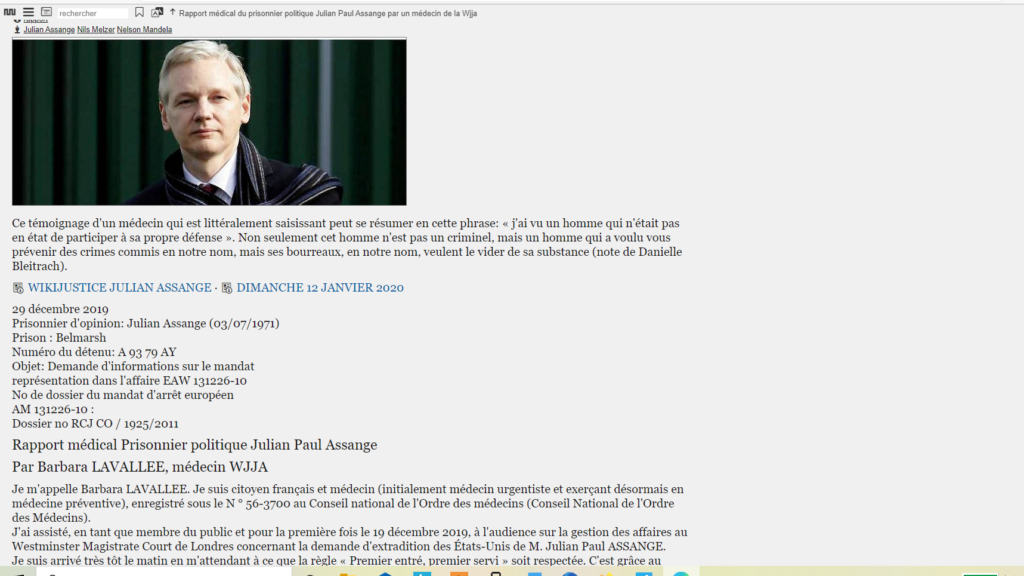
As the lawyer’s monotone voice repeats negatively connoted words such as « absolutely no idea », « very difficult », « last opportunity », Julian Assange comes to life as something is happening in the room. He looks at the journalists, then at the audience and turns towards the lawyer, calls her by the hand, tells her something. She has to interrupt his monologue about his difficulties and turn to him. Unfortunately, we will not hear Julian Assange’s voice, but we feel that he is struggling. We have the impression that Judge Baraitser is becoming increasingly exasperated by the situation, while remaining cold and polite to the lawyer. There is something offbeat about the seriousness of Julian Assange’s situation and the debate about agendas and dates. There is also a power relationship between the judge and the lawyer which is played out elsewhere than in this room, which escapes us but which we feel is very different. Perhaps the power of the institution is not where we think it is.
The court surely wants to tell us « look, he is fine, we are not torturing him ». Of course we don’t know « who » is torturing him, and Prison Director Belmarsh is very careful to specify in his letters that it is not him, because under his responsibility Julian Assange could not be kept in complete isolation. But we have been seeing the effects since October 11th. However, we also see on January 13, 2020 that Julian Assange wants to live: I see that he unfolds his long, thin hands, rubs his cheeks, and he looks at himself again, tries to act, calls Gareth Peirce, asks her for something that she sweeps away. He resigns himself, then stops resigning himself, comes back, she turns a deaf ear… He tries to say something again but it is as if his voice no longer obeys him. Magistrate Baraitser pronounces the date of January 23rd, we see him squeeze into his seat.

The judge ends up asking him if he understood. He stands up and for the first time he has the audacity to say clearly « no, can you repeat » even though it feels like a struggle for him. Exasperated Baraitser announces that the session will resume at 2 p.m. to set the next date. She proposes to Gareth Peirce to ask for a physical appearance so that she can benefit from the famous 2 hours of work in the court consultation rooms that she says she has difficulty in obtaining. The judge adjourns and leaves before Julian Assange has left the box. While this situation is also happening for the first time, we passively resist the order of the security guards to evacuate the room. And for the first time we see Julian Assange squarely in assertive discussion with his lawyer. He is standing there and by his gestures we understand that he is still asking her to do something and while she is making signs of impotence, like « I can’t ». He has a gesture that could be understood as « it’s up to you to do it, not me », by pointing at her with his index finger and then pointing at himself. We don’t hear the exchange but Julian Assange’s voice has much more energy and he comes out opening the back door of the stall himself, having greeted us with dignity.
We are so tired that we have to take a real break for lunch, having dropped off our documents, while wondering what is going on for Julian Assange in the bowels of the court building. When we come back, there are only two journalists left in the room, the people from « Wikileaks » are gone. Only the public has risen to greet Julian Assange’s arrival in a serious way. Entered a moment later, the judge did not see people get up, the mark of respect due to his rank was stolen from him. It is no longer Baraitser but a man. Julian Assange seems physically stronger than this morning but he has even more difficulty speaking, this morning’s fight must have exhausted him. The judge announces that he will appear on January 23rd, I understand that Julian Assange will be present. When the judge leaves, we don’t leave. The public passively resists and refuses to leave as long as Julian Assange is there. We look at him, raise our hand, raise our fist, raise our fist and then come out holding his file. In the street, as the van leaves the courthouse, the activists shout, greet him through the window, one lies down on the bonnet of the van to delay the departure. Julian Assange hears our revolt. We finally witness a scene of struggle for the freedom of a political prisoner. Hope is allowed at last.
[1] https://www.facebook.com/notes/wikijustice-julian-assange/release-request-political-prisoner-julian-paul-assange-for-20200113-hearing-in-w/467506063885713/
[2] https://www.facebook.com/notes/wikijustice-julian-assange/medical-report-political-prisoner-julian-paul-assange-by-wjja-doctor/467499090553077/
